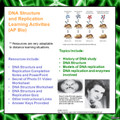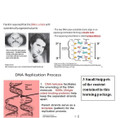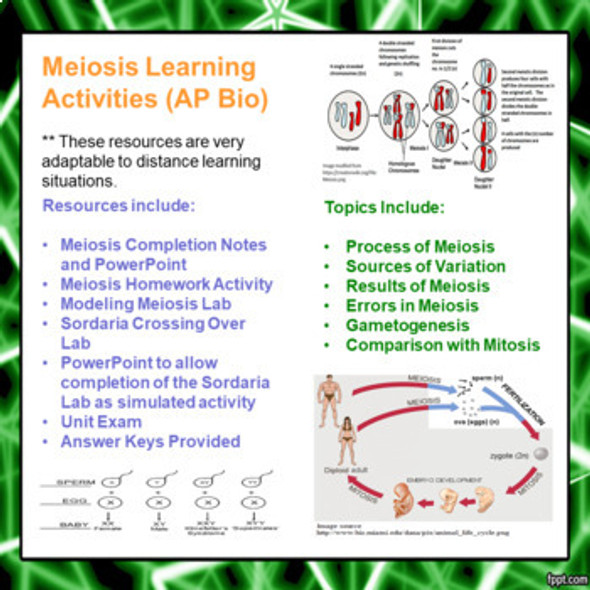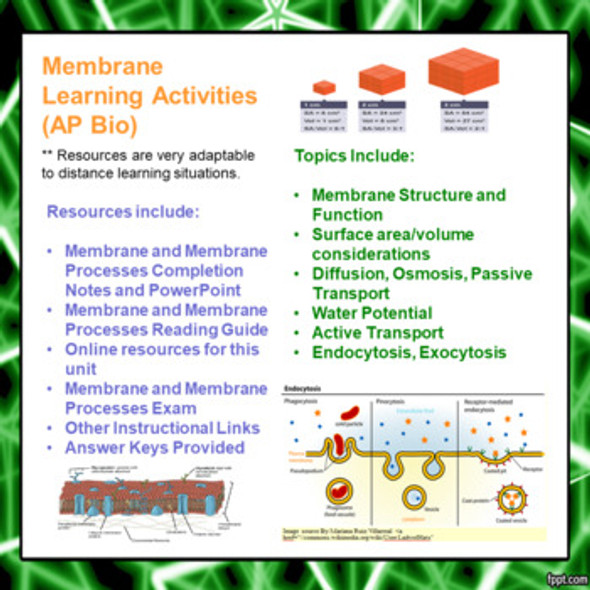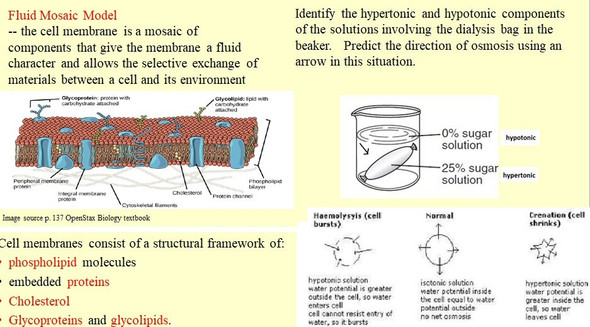DNA Structure and Replication Learning Activities for AP Biology (Distance Learning)
- Bulk Pricing:
- Buy in bulk and save
- Contributor:
- Monday's Rescue
- Grade Level:
- 9-12
- Product Type:
- Learning Package (Notes, PowerPoint, Homework)
- File Type:
- doc, pdf, ppt
- Pages:
- 34
- Answer Key:
- Yes
Description
The contents of this lesson are contained in a zip file. It contains different activities (34 pages of student handouts and a PowerPoint with a total of (49 slides) which can be used to compose a unit for AP Biology or advanced Biology students on DNA Structure and Replication. Concepts dicussed and evaluated include the concepts of DNA structure, the process of replication including major enzymes involved and the scientific history supporting our knowledge concerning this process. Chargaff's Law, Meselson and Stahl's experiment, Rosalind Franklin and Watson and Crick's contributions are also discussed, along with other scientists.
The file contains a video worksheet (The Secret of Photo 51) with links to the video, a 40 plus question homework assignment and a comprehensive quiz and key on these topics.
While these lessons were originally designed for my AP Biology curriculum, they can be adapted to any advanced level Biology program or Genetics elective.
This lesson packet contains a listing of the learning goals, common core learning standards, NGSS learning standards and the AP Biology performance indicators addressed in these materials. These are included in the packet and at the end of the description of this lesson. The learning objectives and content have been updated to reflect the requirements of the 2019-2020 AP Biology curriculum.
The components of this lesson package can easily be displayed to students using and LCD projector and may be readily modified into formats facilitating smartboard technology. Most documents are included in both word doc or docx as well as pdf format to allow editing for specific teacher needs. The learning guides/assignments contain links to online resources to support student learning.
Answer keys are included for all activities. All documents with the exception of the PowerPoint are included in both word (to allow you to easily edit the document to suit your needs) and pdf format.
The specific contents of the learning package includes the following items (the page count for these items are actual student handouts as answer key page counts are not included):
-- DNA Structure and Replication Objectives (2 pages) in word and pdf format
-- DNA Structure and Replication Completion Cloze notes (16 pages) in word and pdf format
-- PowerPoint to accompany the DNA Structure and Replication Completion notes (49 slides)
-- Secret of Photo 51 Nova Video Worksheet (6 pages/32 short answer questions)
-- DNA Structure and Replication Review Homework with Key (46 mixed format questions) in word and pdf (7 pages)
-- DNA Structure and Replication quiz (25 mixed format questions) with Key in word and pdf format (3 pages)
DNA Structure, History, and Replication Objectives ETS
Enduring Understanding
IST-1 Heritable information provides for continuity of life.
Learning Objectives
IST-1.K Describe the structures involved in passing hereditary information from one generation to the next.
IST-1.L Describe the characteristics of DNA that allow it to be used as the hereditary material.
IST-1.M Describe the mechanisms by which genetic information is copied for transmission between generations.
Molecular Genetics Learning Goals
Upon completion of this unit, the student will be able to:
1. state two different nucleic acids.
2. recognize that nucleic acids are formed from nucleotide subunits.
3. describe the structure of the DNA molecule.
4. summarize experiments performed by the following scientists, which provided evidence that DNA is the genetic material; Frederick Griffith, Avery, McCarty, and McLeod, and Erwin Chargaff.
5. list the three components of a nucleotide.
6. distinguish between deoxyribose and ribose.
7. list the nitrogen bases found in DNA, and distinguish between pyrimidine and purine.
8. explain how Watson and Crick deduced the structure of DNA, and describe how they used the evidence of Rosalind Franklin in doing this
9. explain the "base-pairing rule" and describe its significance.
10. describe the structure of DNA, and explain what kind of chemical bond connects the nucleotides of each strand and what type of bond holds the two strands together.
11. explain the terms conservative, semiconservative replication, and dispersive replication
12. describe the process of DNA replication, and explain the role of single strand binding protein.
13. state the energy source that drives DNA synthesis.
14. define antiparallel, and explain why continuous synthesis of both DNA strands is not possible.
15. distinguish between the leading strand and the lagging strand.
16. explain how the lagging strand is synthesized.
17. explain the role of DNA polymerase I, III,, helicase, primase and ligase in
the DNA replication process.
NGSS Standards
Students who demonstrate understanding can:
HS-LS1-1. Construct an explanation based on evidence for how the structure of DNA determines the structure of proteins which carry out the essential functions of life through systems of specialized cells.
HS-LS3-1. Ask questions to clarify relationships about the role of DNA and chromosomes in coding the instructions for characteristic traits passed from parents to offspring.
Common Core State Standards Connections:
ELA/Literacy –
RST.11-12.1 Cite specific textual evidence to support analysis of science and technical texts, attending to important distinctions the author makes and to any gaps or inconsistencies in the account.
RST.11-12.9 Synthesize information from a range of sources (e.g., texts, experiments, simulations) into a coherent understanding of a process, phenomenon, or concept, resolving conflicting information when possible.
WHST.9-12.2 Write informative/explanatory texts, including the narration of historical events, scientific procedures/ experiments, or technical processes.
WHST.9-12.9 Draw evidence from informational texts to support analysis, reflection, and research.
Terms of Use
- Purchase of the product is for classroom use by the purchaser only. It is a violation for individuals, schools, and districts to redistribute, sell, or post this item on the Internet or to other individuals.
This work is licensed under a Creative Commons Attribution-NonCommercial-ShareAlike 4.0 International License.
This learning package bundle is part of the AP Biology Complete Course. The complete course contains 22 learning package bundles in addition to this one. Save nearly 60% over the cost of buying 23 individual unit learning bundles with your purchase of the complete course.
Please feel free to browse any of the other products in my store.



